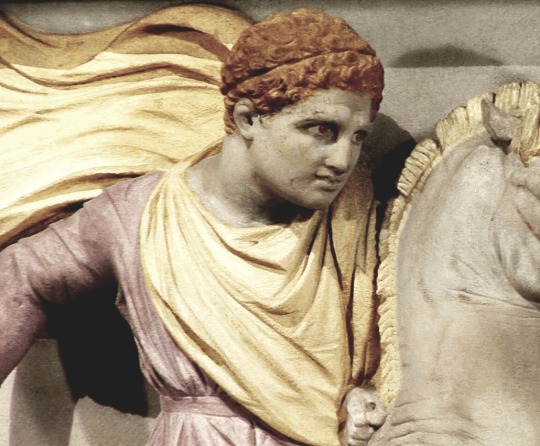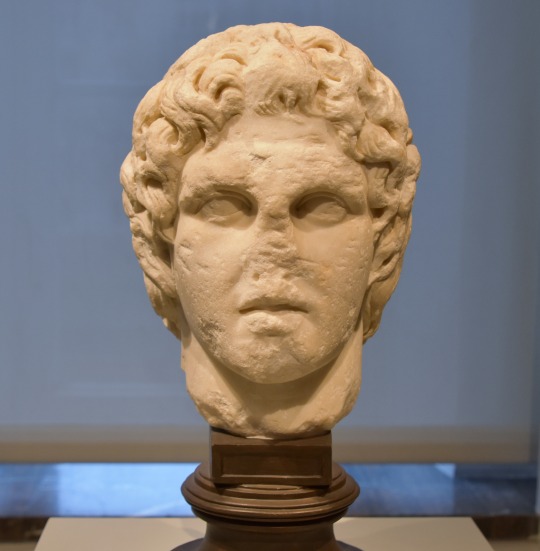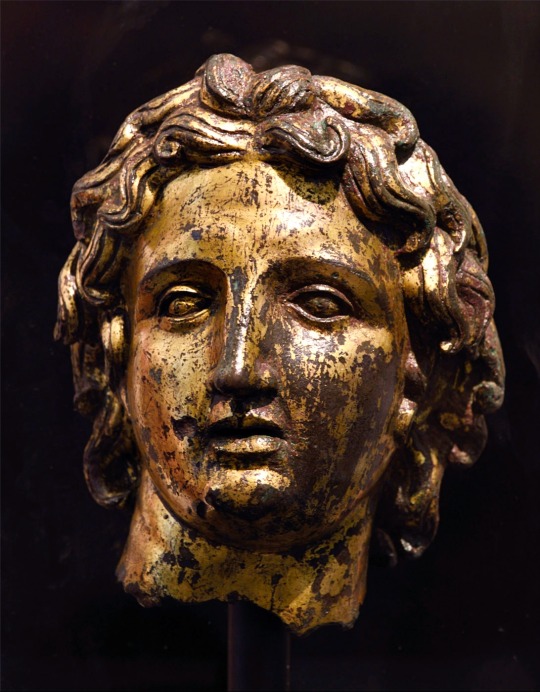#AN EGYPTIAN LIMESTONE LION HEAD SCULPTOR’S MODEL
Explore tagged Tumblr posts
Text



AN EGYPTIAN LIMESTONE LION HEAD SCULPTOR’S MODEL LATE PERIOD, 30TH DYNASTY TO EARLY PTOLEMAIC PERIOD, CIRCA 380-300 B.C.
#AN EGYPTIAN LIMESTONE LION HEAD SCULPTOR’S MODEL#LATE PERIOD#30TH DYNASTY TO EARLY PTOLEMAIC PERIOD#CIRCA 380-300 B.C.#limestone#limestone sculptiure#ancient artifacts#archeology#archeolgst#history#history news#ancient history#ancient culture#ancient civilizations#ancient egypt#egyptian history#egyptian art#ancient art#art history
92 notes
·
View notes
Text

Alexander hunting lions on the marble Alexander Sarcophagus, 4th century BC.
From the Royal Necropolis of Sidon.
His hair, lips and eye contours were in red brown. His head has indentations for attaching a royal diadem.
-Istanbul Archaeological Museum.

A Graeco-Egyptian marble portrait head of Alexander The Great.
Mid-3rd/Mid-2nd Century BC.
The youthful head with short wavy fringe and long loose curls falling down over the nape of his neck, the sockets of his eyes deeply cut originally to have taken inlays, with sensitively modelled 'rings of Venus' on his neck, traces of brown painted gesso on some of the curls, mounted.
The head was believed to have come from Hermopolis (the city of Hermes), modern day Ashmunein.
-Formerly in the Maurice Nahman collection.

Limestone head of Alexander the Great.
Hellenistic period, 250-200 BC.
-Nicosia, Archaeological Museum, Cyprus.

Statue of the Dioskouroi with portrait head of Alexander the Great.
1st century AD. Found at Cyrene (Libya), Baths of Trajan.
-Cyrene Archaeological Museum, Libya.

The heroic courage, the "lion-like" of Alexander, was expressed in his portraits according to the ancient imagery by the strands thrown up over his forehead.
Ca. 270-246 BC from Alexandria.
-Landesmuseum Württemberg, Stuttgart.

Marble statuette of Alexander the Great as the god Pan.
From Pella, Macedonia. Around 300-270 BC.
The figure has two small horns projecting from the top of the head, pointed ears and a goat's tail, in imitation of the rustic half-goat deity Pan, who was popular in Macedonia. It is presumed that the statuette had cloven hooves which are now missing.
-Pella Archeological Museum.

A Hellenistic parian marble portrait head of Alexander The Great. Mid 2nd Century BC.
With luxuriant wavy hair, cupid bow lips and unarticulated eyes, head inclined slightly to left, a hole for fixing a diadem in the top of his head, traces of red on eyes and mouth and remains of gilding, mounted.
-Rheinischen Landesmuseum, Bonn.

Head of Alexander of the "Erbach type".
The type is named after the best copy, found at Hadrian's Villa, Tivoli, now in Schloss Erbach, Germany. Also known as the "Acropolis-Erbach type" due to the similarity to the head from the Athens Acropolis.
Roman period copy of an original from around 330 BC. Acquired in 1874 in Madytos, Thrace.
-Altes Museum, Berlin.

A Roman replica of a marble head of Alexander the Great. It was found in Kom El Dekka in Alexandria by the Polish expedition. 31 BCE-395 CE.
The head bears the traditional features of the portraits of Alexander the Great which were mooraged by the sculptor Lysippos. The head is inclined to the right, the eyes are gazing meditatively into the distant horizon.
-Antiquities Museum, Bibliotheca Alexandrina.

Gilded bronze head of Alexander the Great. 2nd century AD.
-Palazzo Massimo alle Terme, Roman National Museum.
7 notes
·
View notes